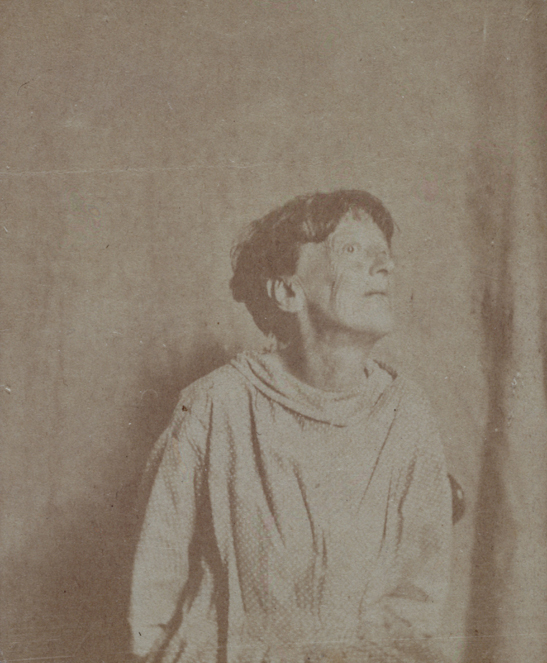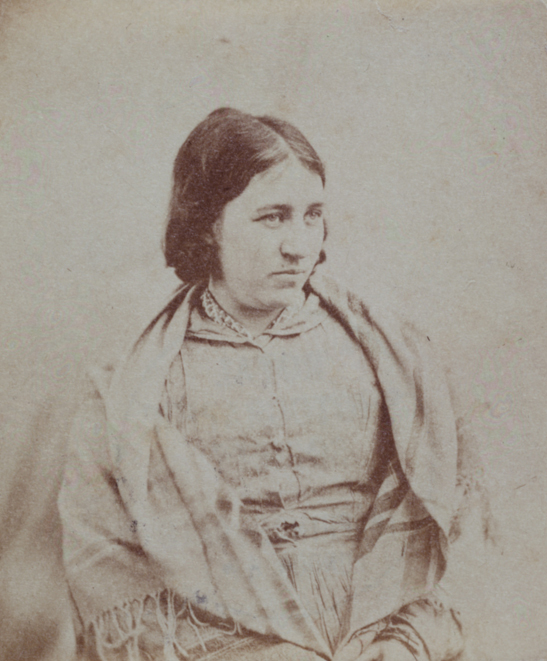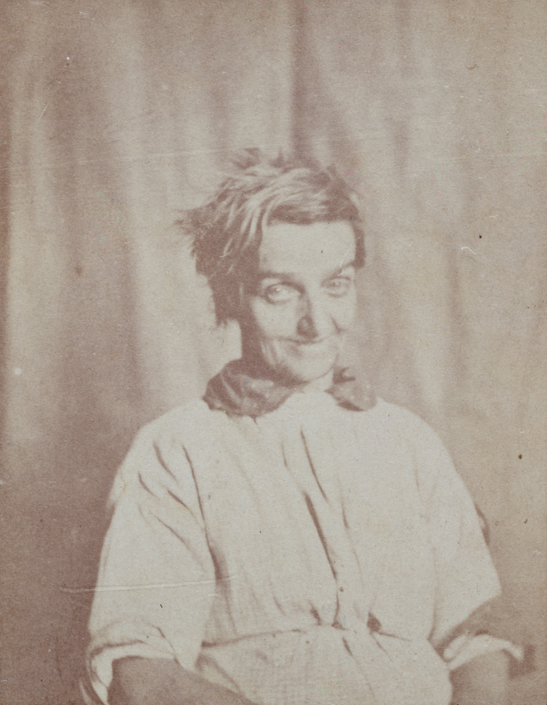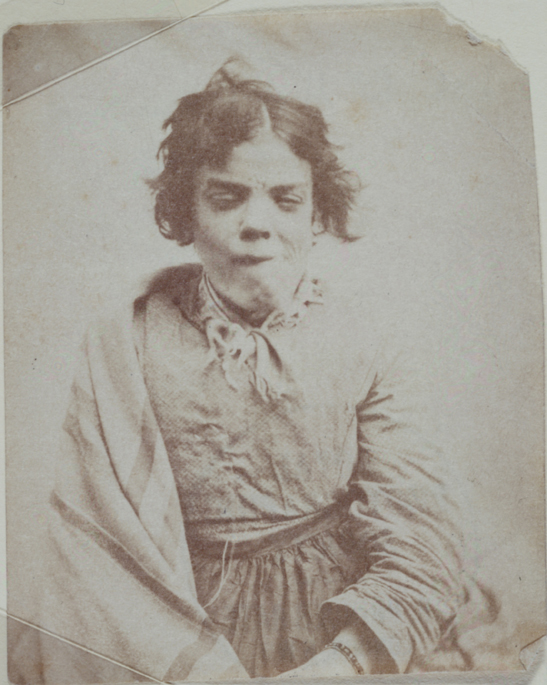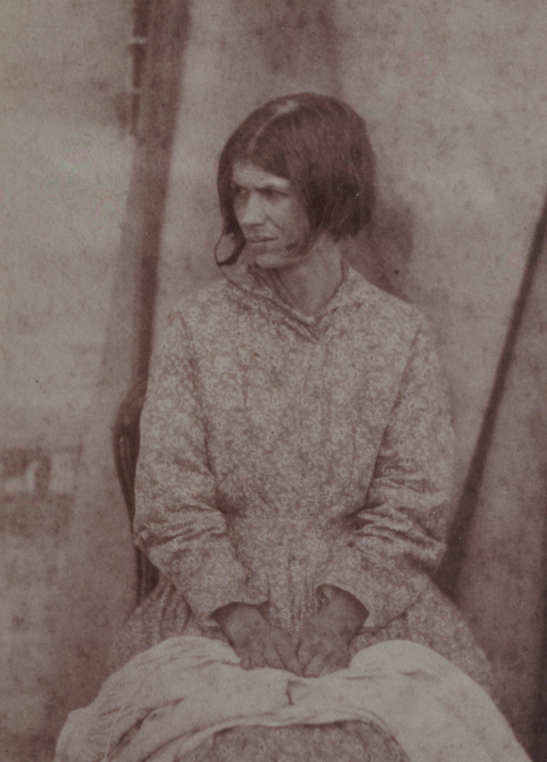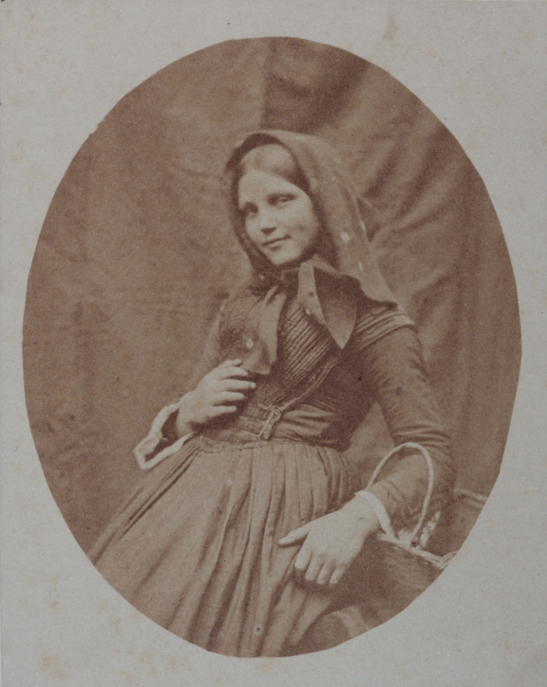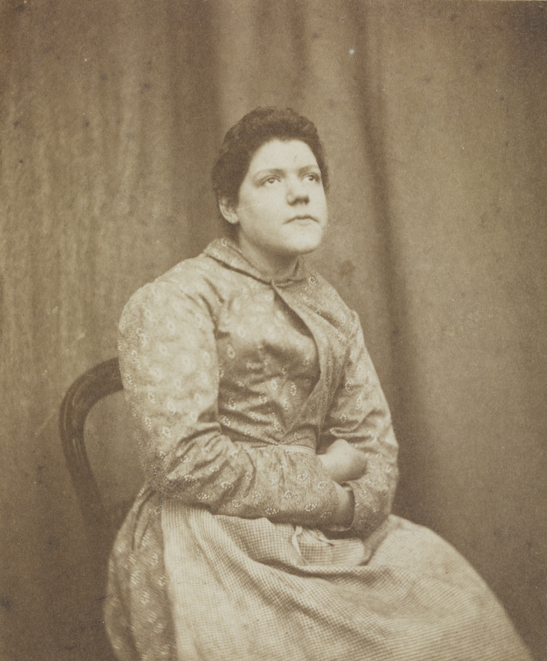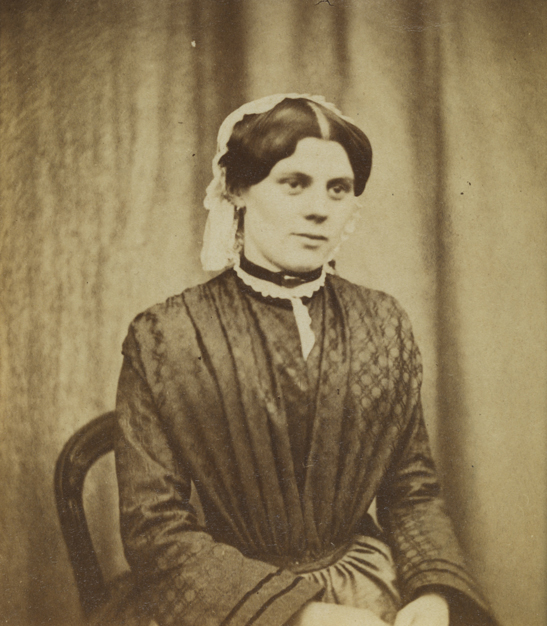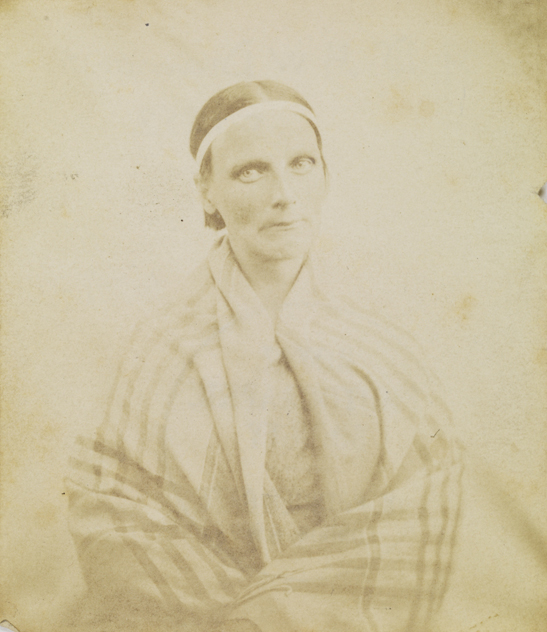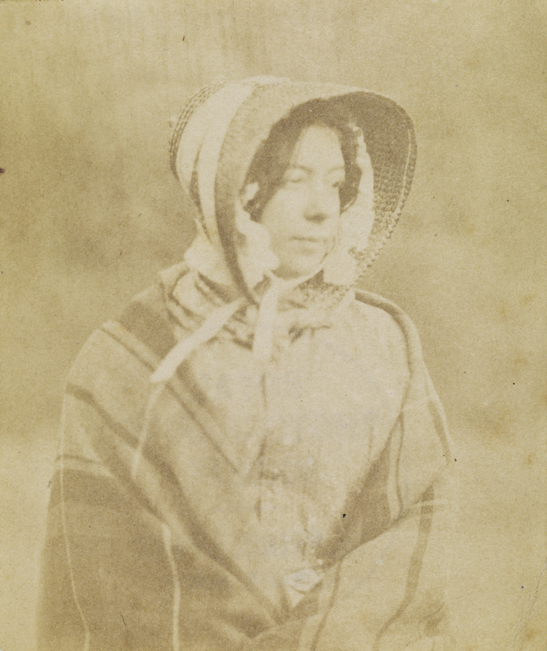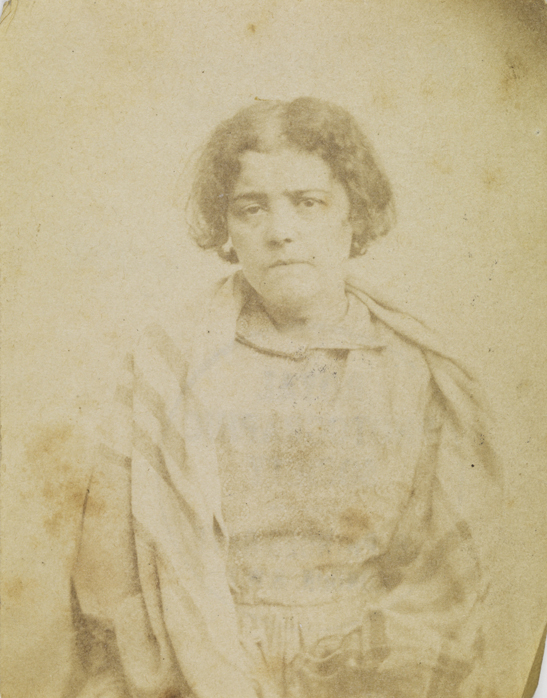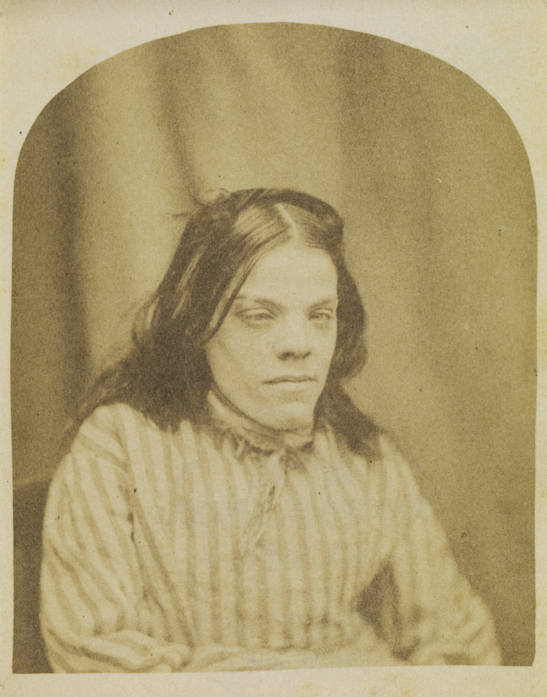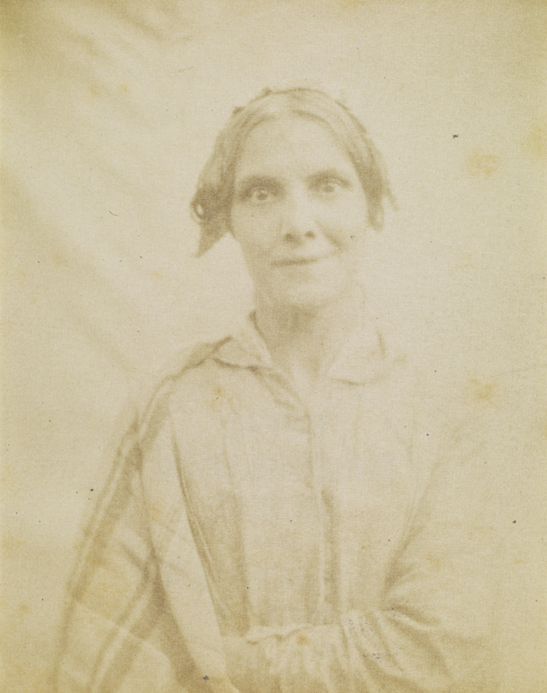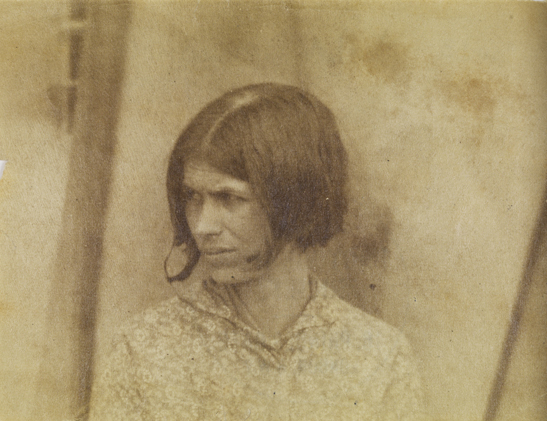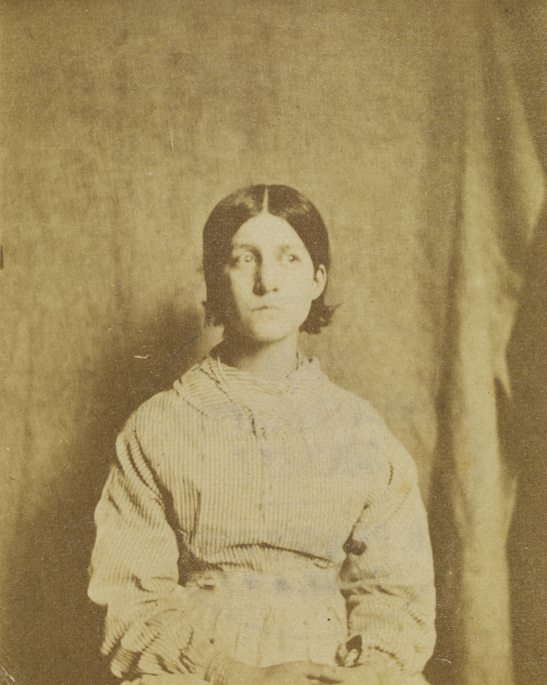“…the Photographer catches in a moment the permanent cloud, or the passing storm or sunshine of the soul and thus enables the Metaphysician to witness and trace out the visible and the invisible in one important branch of his researches into the Philosophy of the human mind…” – Dr. H. W. Diamond – ‘ On the Application of Photography to the Physiognomy and Mental Phenomena of Insanity’, The Photographic Journal, July, 1856.
Can you know a person’s mind from looking at their body? Do you believe the face mirrors the soul? Once upon a time, physiognomy was all the rage – it’s the belief that a person’s character and temperament is revealed by their physical appearance. One advocate of this pseudo-science was Dr. Hugh Welch Diamond (1809 – 1886), who in May 1856 presented a paper to the Photographic Society of London outlining his view that photography was useful in the diagnosis and treatment of mental illness. He felt that by studying the faces of patients, physicians could identify and diagnose mental complaints. For Diamond, the faces of the patients represented ‘types’ of mental illness such as melancholia and delusional paranoia.
The paper, ‘On the Application of Photography to the Physiognomy and Mental Phenomena of Insanity’, enlarged on Diamond’s work as a physician at the Surrey County Asylum and Secretary to the Photographic Society of London. The pictures were of his patients housed in those notorious institutions where the mentally ill were mistreated.
Diamond was born and educated in Norwich; studied medicine at the Royal College of Surgeons; opened a private surgery in London in 1831; became a fellow of the Royal College of Surgeons in 1835 and an elected fellow of the Medical Society of London in 1846. In 1845 he began meeting with what became known as the Calotype Society, later referred to as the Photographic Club. Also during the 1840s he became interested in the newly reformed treatment of the insane, and in 1842 began studying mental disease at Bethlem Hospital under Sir George Tuthill.
In 1848 he was elected the residential superintendent of the female department of the Surrey County Lunatic Asylum at Springfield, where he remained until 1858. In the 1850s Diamond published more than a dozen essays and notes on photography and became active in the Photographic Exchange Club and the Photographic Society of London. He became known for photographing patients, the first systematic use of photography in the history of psychiatry. In 1856 Diamond resigned his position at the Surrey County Asylum and moved to Twickenham, Middlesex, where he established a private asylum for female patients.
“Asylums offered a life with its own special protections and limitations, a simplified and narrowed life perhaps, but within this protective structure, the freedom to be as mad as one liked and, for some patients at least, to live through their psychoses and emerge from their depths as saner and stabler people.
“In general, though, patients remained in asylums for the long term. There was little preparation for return to life outside, and perhaps after years cloistered in an asylum, residents became ‘institutionalized’ to some extent, and no longer desired, or could no longer face, the outside world.” – Oliver Sacks
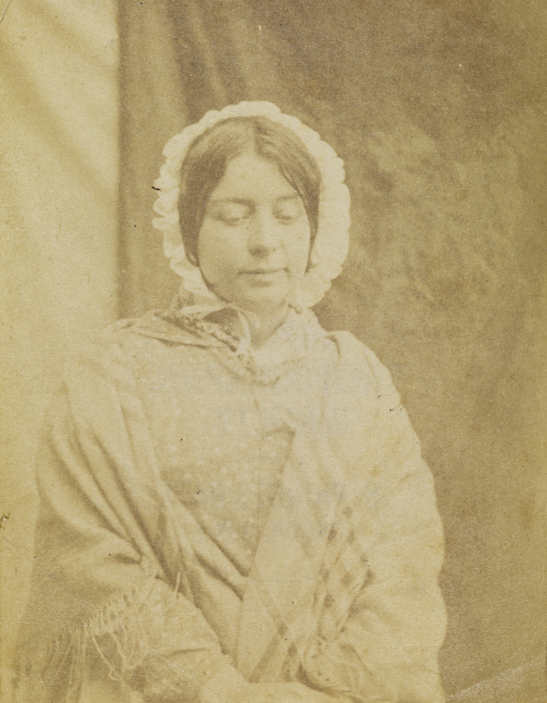
Portrait of a patient from Surrey County Asylum, no. 5
Creator: Dr. Hugh Welch Diamond (1808 – 1886)
Date: c. 1855
Would you like to support Flashbak?
Please consider making a donation to our site. We don't want to rely on ads to bring you the best of visual culture. You can also support us by signing up to our Mailing List. And you can also follow us on Facebook, Instagram and Twitter. For great art and culture delivered to your door, visit our shop.


